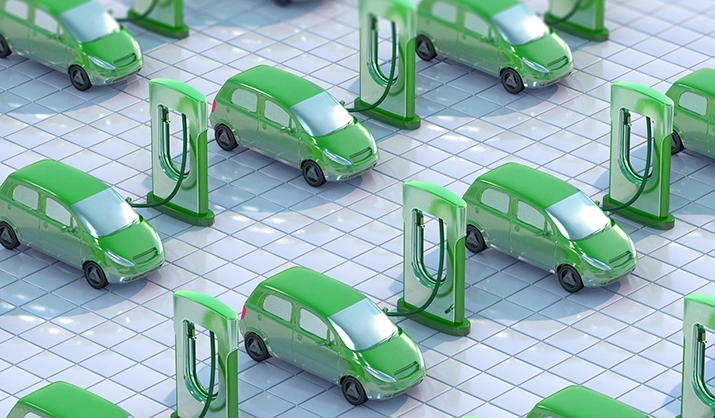The new car buying process in the U.S. has been shifting online more and more. This trend is, in part, fueled by the ever-present consumer need for convenience as well as a desire to avoid perceived issues such as extended negotiations at dealerships or pressure to purchase additional features. In short, consumers want to have more knowledge about the car they intend to purchase, its features, pricing and payment plans before they enter the dealership to ensure they’re getting the best possible value and to avoid “dealership anxiety.”
As early as the mid-1980s, the industry understood these consumer frustrations. To address these issues, GM launched its Saturn brand, which, in addition to other goals, sought to alleviate consumer pain points by offering a no-haggle pricing option. Saturn was successful for a time but the strategy was not attempted with any of GM’s other brands, and competitors never picked up on the trend. Saturn ceased production in 2009, but the basic construct of addressing dealership anxiety remains an important issue.
Consumers want to have more knowledge about the car they intend to purchase, its features, pricing and payment plans before they enter the dealership to ensure they’re getting the best possible value and to avoid “dealership anxiety.”
Adjusting the dealership model to enhance customer connection points.
The dealer network, built many years ago with rules in place that prevent manufacturers from selling direct, is not going away. Nor should it. While the sales experience has much room for improvement — according to a research study by Cox Automotive, only 72 percent of recent buyers were satisfied with their experience¹ — dealers continue to serve two important functions: local service, particularly for warranty work, and in-person interactions with vehicles which include viewing options and test drives.
Dealerships are challenged to update their approach to strike the right balance between the value they offer and evolving customer expectations, and the stakes are high. Cox Automotive found that the average buyer only visits two dealerships in the car buying process, the lowest it’s ever been, and digital retailing is key to a long-term winning strategy, with 75% of dealers acknowledging that they won’t be able to survive without it.¹
Borrowing from Tesla’s value-to-customer model.
Right now, the clear leader in a well-defined online-offline sales model is Tesla. The company has pushed more of the research, options building, and pricing online, a sales model that should be considered by dealers with regard to future car sales. Tesla has also shown that scaling back on-site inventory, offering a few display models for consumers to view and evaluate prior to ordering, and focusing on selling the product differentiators, such as value to the customer, can ultimately benefit dealerships. Instead of maximizing revenue through aggressive sales tactics, dealers can shift the profits by taking a customer-centric approach.
A positive consumer experience should serve as the industry model, but, as Blake Morgan noted recently on Forbes’ CMO Network, there are a lot of steps and getting there will take time.²

Research can help dealers understand customer behaviors throughout the online-offline customer journey by identifying customer segments and specific buyer types and preferences. These insights enable dealerships to develop clearer communications on multiple channels, create more direct customer pathways, and are key to a long-term, future-ready growth strategy.
Moving toward a customer-focused model.
So, what can dealers do now? First, carefully optimize their online presence to enhance the methods customers utilize to research and compare makes and models, features, fuel economy, and price.
Dealerships can explore these critical touchpoints through a buyer lens by considering key questions to help optimize the customer journey:
- Is the manufacturer website driving customers to the dealer website appropriately?
- Is the dealership’s website easy to navigate?
- Does the dealership’s online experience provide the necessary information and tools for decision making?
- Are customers who visit the site sufficiently compelled by what they see and learn to schedule a visit to the dealer location?
Next, dealers should update on-site interactions to alleviate key paint points. As a recent J.D. Powers U.S. Sales Satisfaction Survey indicated mirroring the ease and convenience of the customer’s angst-free online experience at the dealership is important to consumers.³ Dealers should clearly communicate why customers should consider visiting their location and craft a customer-first sales experience that meets the needs and expectations of each type of purchaser.
Research can help dealers understand customer behaviors throughout the online-offline customer journey by identifying customer segments and specific buyer types and preferences. These insights enable dealerships to develop clearer communications on multiple channels, create more direct customer pathways, and are key to a long-term, future-ready growth strategy.
As Tesla has proven, consumers are willing to pay a slightly higher price premium for a better car purchasing experience. To achieve similar results, dealerships should invest in understanding their customers and develop a strategic approach to guiding them on their purchase journey.
Want to learn more about our insights work for the auto industry?
Sources:
¹ Cox Automotive Experience – Digitization of End-to-End Retail study.
² Forbes CMO Network – 10 Customer Experience Lessons from Tesla.
³ J.D. Power – 2021 U.S. Sales Satisfaction Index Study.




